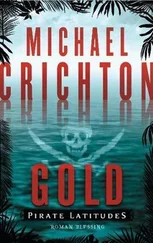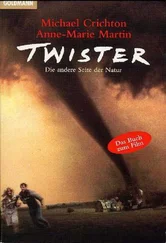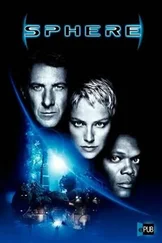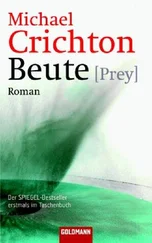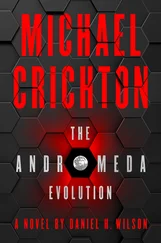Michael Crichton - Jurassic Park
Здесь есть возможность читать онлайн «Michael Crichton - Jurassic Park» весь текст электронной книги совершенно бесплатно (целиком полную версию без сокращений). В некоторых случаях можно слушать аудио, скачать через торрент в формате fb2 и присутствует краткое содержание. Жанр: Детская проза, на английском языке. Описание произведения, (предисловие) а так же отзывы посетителей доступны на портале библиотеки ЛибКат.
- Название:Jurassic Park
- Автор:
- Жанр:
- Год:неизвестен
- ISBN:нет данных
- Рейтинг книги:4 / 5. Голосов: 2
-
Избранное:Добавить в избранное
- Отзывы:
-
Ваша оценка:
- 80
- 1
- 2
- 3
- 4
- 5
Jurassic Park: краткое содержание, описание и аннотация
Предлагаем к чтению аннотацию, описание, краткое содержание или предисловие (зависит от того, что написал сам автор книги «Jurassic Park»). Если вы не нашли необходимую информацию о книге — напишите в комментариях, мы постараемся отыскать её.
Jurassic Park — читать онлайн бесплатно полную книгу (весь текст) целиком
Ниже представлен текст книги, разбитый по страницам. Система сохранения места последней прочитанной страницы, позволяет с удобством читать онлайн бесплатно книгу «Jurassic Park», без необходимости каждый раз заново искать на чём Вы остановились. Поставьте закладку, и сможете в любой момент перейти на страницу, на которой закончили чтение.
Интервал:
Закладка:
Grant laughed. "Sure. They could feed a baby hadrosaur."
Morris laughed, too. "A baby hadrosaur. That'd be something to see. How big were they?"
"About so," Grant said, holding his hands six inches apart. "Squirrelsize."
"And how long before they become full-grown?"
"Three years," Grant said. "Give or take."
Morris held out his band. "Well, thanks again for your help."
"Take it easy driving back," Grant said. He watched for a moment as Morris walked back toward his car, and then closed the trailer door.
Grant said, "What did you think?"
Ellie shrugged. "Naive."
"You like the part where John Hammond is the evil arch-villain?" Grant laughed. "John Hammond's about as sinister as Walt Disney. By the way, who called?"
"Oh," Ellie said, "it was a woman named Alice Levin. She works at Columbia Medical Center. You know her?"
Grant shook his head. "No."
"Well, it was something about identifying some remains. She wants you to call her back right away."
Skeleton
Ellie Sattler brushed a strand of blond hair back from her face and turned her attention to the acid baths. She had six in a row, at molar strengths from 5 to 30 percent. She 'had to keep an eye on the stronger solutions, because they would eat through the limestone and begin to erode the bones. And infant-dinosaur bones were so fragile, She marveled that they had been preserved at all, after eighty million years.
She listened idly as Grant said, "Miss Levin? This is Alan Grant. What's this about a… You have what? A what?" He began to laugh. "Oh, I doubt that very much, Miss Levin… No, I really don't have time, I'm sorry… Well, I'd take a look at it, but I can pretty much guarantee it's a basilisk lizard. But… yes, you can do that. All right. Send it now." Grant hung up, and shook his head. "These people."
Ellie said, "What's it about?"
"Some lizard she's trying to identify," Grant said. "She's going to fax me an X-ray." He walked over to the fax and waited as the transmission came through. "Incidentally, I've got a new find for you. A good one."
"Yes?"
Grant nodded. "Found it just before the kid showed up. On South Hill, horizon four. Infant velociraptor: jaw and complete dentition, so there's no question about identity. And the site looks undisturbed. We might even get a full skeleton."
"That's fantastic," Ellie said. "How young?"
"Young," Grant said. "Two, maybe four months at most."
"And it's definitely a velociraptor?"
"Definitely," Grant said. "Maybe our luck has finally turned."
For the last two years at Snakewater, the team had excavated only duckbilled hadrosaurs. They already had evidence for vast herds of these grazing dinosaurs, roaming the Cretaceous plains in groups of ten or twenty thousand, as buffalo would later roam.
But increasingly the question that faced them was: where were the predators?
They expected predators to be rare, of course. Studies of predator/prey populations in the game parks of Africa and India suggested that, roughly speaking, there was one predatory carnivore for every four hundred herbivores. That meant a herd of ten thousand duckbills would support only twenty-five tyrannosaurs. So it was unlikely that they would find the remains of a large predator.
But where were the smaller predators? Snakewater had dozens of nesting sites-in some places, the ground was literally covered with fragments of dinosaur eggshells-and many small dinosaurs ate eggs. Animals like Dromaeosaurus, Oviraptor, Velociraptor, and Coelurus-predators three to six feet tall-must have been found here in abundance.
But they had discovered none so far.
Perhaps this velociraptor skeleton did mean their luck had changed. And an infant! Ellie knew that one of Grant's dreams was to study infant-rearing behavior in carnivorous dinosaurs, as he had already studied the behavior of herbivores. Perhaps this was the first step toward that dream. "You must be pretty excited," Ellie said.
Grant didn't answer.
"I said, you must be excited," Ellie repeated.
"My God," Grant said. He was staring at the fax.
Ellie looked over Grant's shoulder at the X-ray, and breathed out slowly. "You think it's an amassicus?"
"Yes," Grant said. "Or a triassicus. The skeleton is so light."
"But it's no lizard," she said.
"No," Grant said. "This is not a lizard. No three-toed lizard has walked on this planet for two hundred million years."
Ellie's first thought was that she was looking at a hoax-an ingenious, skillful hoax, but a hoax nonetheless. Every biologist knew that the threat of a hoax was omnipresent. The most famous hoax, the Piltdown man, had gone undetected for forty years, and its perpetrator was still unknown. More recently, the distinguished astronomer Fred Hoyle had claimed that a fossil winged dinosaur, Archaeopteryx, on display in the British Museum, was a fraud. (It was later shown to be genuine.)
The essence of a successful hoax was that it presented scientists with what they expected to see. And, to Ellie's eye, the X-ray image of the lizard was exactly correct. The three-toed foot was well balanced, with the medial claw smallest. The bony remnants of the fourth and fifth toes were located up near the metatarsal joint. The tibia was strong, and considerably longer than the femur. At the hip, the acetabulum was complete. The tail showed forty-five vertebrae. It was a Procompsognathus.
"Could this X-ray be faked?"
"I don't know," Grant said. "But it's almost impossible to fake an X-ray. And Procompsognathus is an obscure animal. Even people familiar with dinosaurs have never heard of it."
Ellie read the note. "Specimen acquired on the beach of Cabo Blanco, July 16… Apparently a howler monkey was eating the animal, and this was all that was recovered. Oh… and it says the lizard attacked a little girl."
"I doubt that," Grant said. "But perhaps. Procompsognathus was so small and light we assume it must be a scavenger, only feeding off dead creatures. And you can tell the size"-he measured quickly-"it's about twenty centimeters to the hips, which means the full animal would be about a foot tall. About as big as a chicken. Even a child would look pretty fearsome to it. It might bite an infant, but not a child."
Ellie frowned at the X-ray image. "You think this could really be a legitimate rediscovery?" she said. "Like the coelacanth?"
"Maybe," Grant said. The coelacanth was a five-foot-long fish thought to have died out sixty-five million years ago, until a specimen was pulled from the ocean in 1938. But there were other examples. The Australian mountain pygmy possum was known only from fossils until a live one was found in a garbage can in Melbourne. And a ten-thousand-year-old fossil fruit bat from New Guinea was described by a zoologist who not long afterward received a living specimen in the mail.
"But could it be real?" she persisted. "What about the age?"
Grant nodded. "The age is a problem."
Most rediscovered animals were rather recent additions to the fossil record: ten or twenty thousand years old. Some were a few million years old- in the case of the coelacanth, sixty-five million years old. But the specimen they were looking at was much, much older than that. Dinosaurs had died out in the Cretaceous period, sixty-five million years ago. They had flourished as the dominant life form on the planet in the Jurassic, 190 million years ago. And they had first appeared in the Triassic, roughly 220 million years ago.
It was during the early Triassic period that Procompsognathus had lived-a time so distant that our planet didn't even look the same. All the continents were joined together in a single landmass, called Pangaca, which extended from the North to the South Pole-a vast continent of ferns and forests, with a few large deserts. The Atlantic Ocean was a narrow lake between what would become Africa and Florida. The air was denser. The land was warmer. There were hundreds of active volcanoes. And it was in this environment that Procompsognathus lived.
Читать дальшеИнтервал:
Закладка:
Похожие книги на «Jurassic Park»
Представляем Вашему вниманию похожие книги на «Jurassic Park» списком для выбора. Мы отобрали схожую по названию и смыслу литературу в надежде предоставить читателям больше вариантов отыскать новые, интересные, ещё непрочитанные произведения.
Обсуждение, отзывы о книге «Jurassic Park» и просто собственные мнения читателей. Оставьте ваши комментарии, напишите, что Вы думаете о произведении, его смысле или главных героях. Укажите что конкретно понравилось, а что нет, и почему Вы так считаете.


